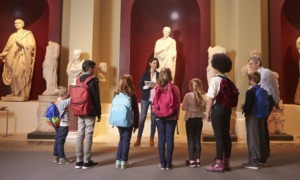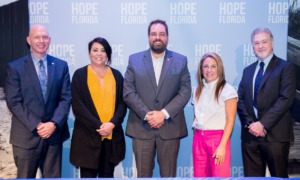 I go to the local Boys and Girls Club every Monday afternoon to pick up Amanda (children’s names have been changed) for an hour to check on how her week is going. Each week when I arrive, she is already pacing the foyer entrance with her backpack on and hand poised on the handle, ready to bolt out the door. She isn’t just waiting for me; she is making sure I have not forgotten her.
I go to the local Boys and Girls Club every Monday afternoon to pick up Amanda (children’s names have been changed) for an hour to check on how her week is going. Each week when I arrive, she is already pacing the foyer entrance with her backpack on and hand poised on the handle, ready to bolt out the door. She isn’t just waiting for me; she is making sure I have not forgotten her.
Bartlesville, Oklahoma has a running club based out of the YMCA that’s geared toward troubled adolescents who have been involved in the court system. When I watch Sam leave for the group run, I see his locker key bouncing on his shoe. He hasn’t just left his school books behind; everything he owns is in that locker, and the shower in the locker room after his run is the only one he is going to get.
I see my day care patients in the morning, while the older kids are all in classes at school. Jonas comes early to the local community center, where he and his baby sister get breakfast before sitting in a circle to learn about the weather and the letter of the day. Some of these children will have all three meals here, and some of them will stay late while their mothers stand in line at the coat closet across the street where they hope to find things for winter before the cold winds start.
I’m not just a counselor in our community, with a caseload full of foster kids, but a foster parent also. My husband and I have fostered 87 children in the last three years, and now six have stayed with no other place to go. Four of the adoptions are finished, and two more will be before the spring tornados begin. Fostering has been its own tornado, and most of the children I know wouldn’t make it if it weren’t for some of the community programs we have in place.
I recently wrote a thank you letter to one of these programs, because I so want people to understand how important to our community they are and what a difference they make. Community programs provide a safe haven for these children, many of whom would have no other safe place to be during the after-school and summer hours. Rather than only containing them, structured programs keeps them flowing through activities, encourages study and learning opportunities, and provides positive mentors with whom they can interact.
[Related: The Maze of Foster Care and Health Care]
Many of the children I work with would not eat if these programs were not available. Most of the Department of Human Services custody children with whom I work would not be safe in their current placements if they did not have such programs included as part of the family’s safety plan. Further, the cultural and community outings expose the children to a world they would not encounter if they were not in these programs. This opens their lives to endless possibilities, including the possibility of breaking the cycle that has trapped generations.
Foster children are taken into custody because they are not safe in some way, but are often scooped up suddenly or unexpectedly without fully understanding what is happening around them. This makes it challenging at times for them to trust authority figures, teachers or other community members who are trying to help them. It takes time for them to develop trust and to feel safe, or to know that they are noticed or even known.
Community program staff are able to consistently greet the children with both kindness and patience, and their compassion for the children is evident. I also observe them setting healthy and appropriate limits with the children, modeling good boundaries and encouraging respectful interpersonal interactions. They know the children by name and number, refer specific concerns to the parents and professionals as necessary and make sure each child in the facility knows they are unique and special. These children feel cared for, safe, and equipped to reach their potential. These are gifts and experiences they would not have without community-based programs that not only help, but also protect, and in many cases, even rescue.
Emily Christensen is a Ph.D.-level counselor who is also a foster parent. She works closely with the Department of Human Services and several foster organizations.
More related articles:
Wraparound Services Surround Foster Youth, Families with Help
The One Question Foster Care Workers Need to Ask Themselves
We Know How to Help Foster Kids Despite Past Trauma




























